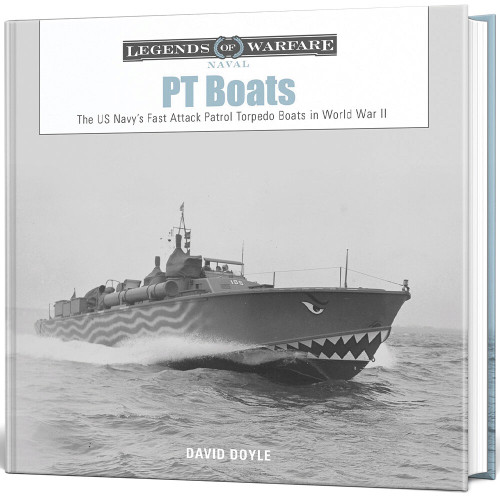Features
- Dimensions: 6" wide x 9" tall
- 264 Pages
- Hardcover
Skamarakas. PT boats loom large in the popular imagination of World War II. In March 1942, a PT boat evacuated Gen. Douglas MacArthur, his family, and top staff from the Philippines, which inspired the war movie They Were Expendable, directed by John Ford and starring John Wayne. John F. Kennedy became a war hero while commanding PT-109, which collided with a Japanese destroyer and was sunk in August 1943. But the story of PT boats has never been told in the depth and detail that their exemplary service deserves. Naval historian C. J. Skamarakas uses one Pacific PT boat squadron to tell the story of PT boats in action in World War II.
Eighty feet long, PT boats were designed to launch torpedoes against enemy ships five and ten times their own size. But defects in the torpedoes and the boats' speed and maneuverability ultimately shifted the boats' mission to patrolling and breaking up Japanese shipping and reinforcements. In the waters of the Southwest Pacific as part of MacArthur's offensives in New Guinea and the Philippines, Motor Torpedo Boat Squadron 25 completed these missions and also executed other operations for which they weren't specifically trained, including inserting commandos behind enemy lines, air-sea rescue, raids on enemy positions, reconnaissance of potential sites for amphibious landings, coordination of air strikes in support of ground forces, meetings with guerrilla leaders, recovery of prisoners of war, diversionary activities, and psychological operations. Today we would call many of their missions "special ops." The Japanese called PT boats "mosquitoes" and "devil boats."
The Devil Boats recounts the unique contributions of one motor torpedo boat squadron and through it tells the story of PT boats in the Pacific War. With drama and excitement, as well as careful attention to detail, the book fills a void in the history of the U.S. Navy in World War II.




